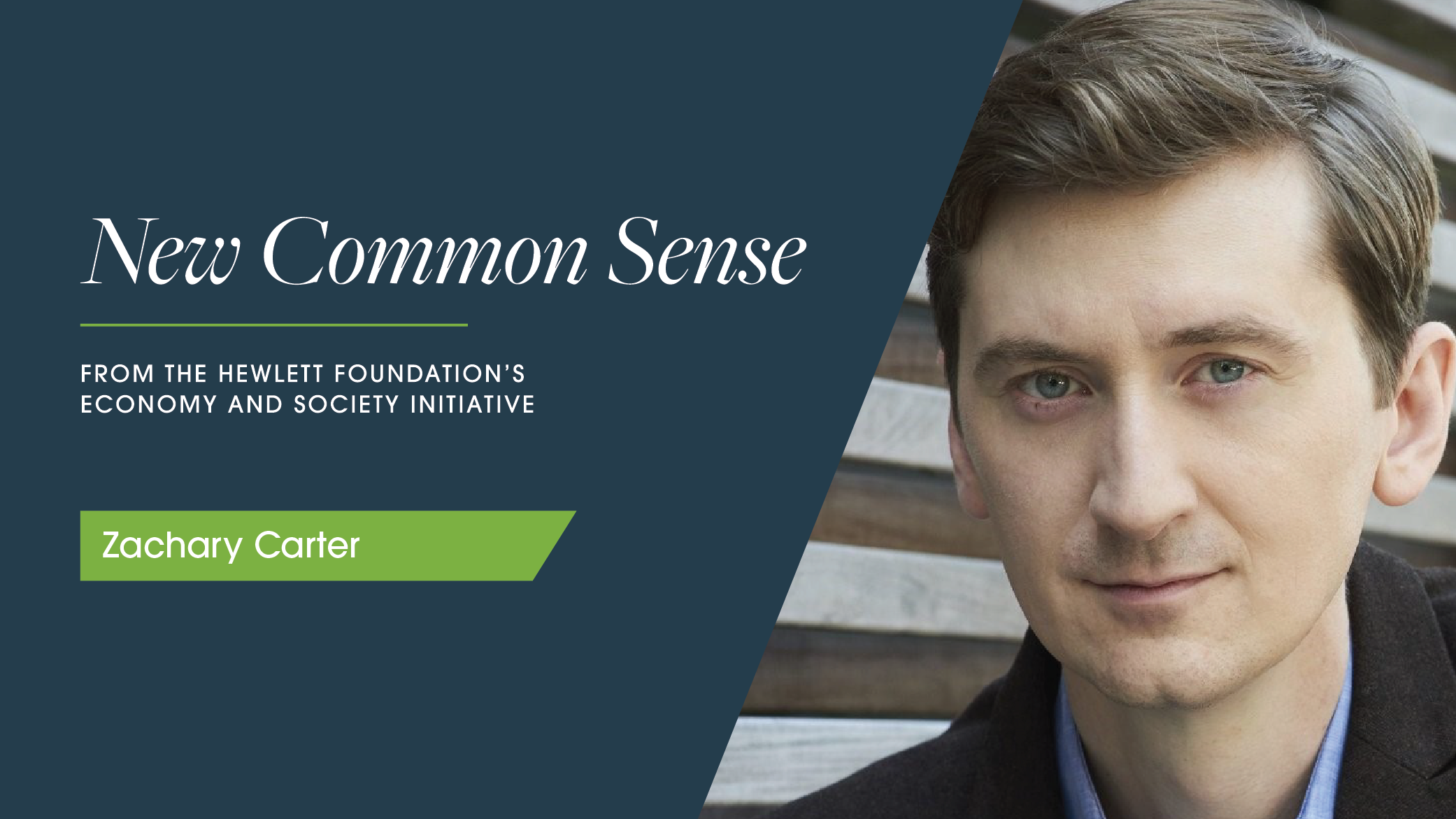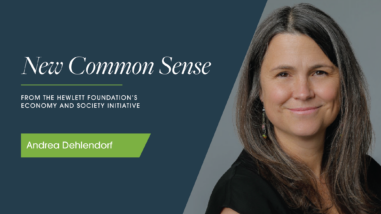Why is Bidenomics working?

This was not a new prescription from Dr. Furman. Since the early months of Joe Biden’s presidency, Furman had consistently argued that the president’s spending would lead to inflation that could only be resolved through job destruction. Furman’s view of the problem was straightforward: Households had too much money on their hands, and the ultimate solution was to make them poorer.
“I feel like I just repeat myself month after month on the topic,” Furman told CNBC. “The inflation is just embedded. The wages lead to prices, the prices lead to wages and it has its own momentum now.”
Most economists speak in euphemism when they discuss matters like these, referring to vague “adjustments,” “demand slack,” or “labor market softening” to deflect from the brutal fact that the federal government’s standard tool for relieving inflation is to deliberately create unemployment. Furman was not alone in calling for layoffs. He was joined, for instance, by Larry Summers, former IMF Chief Economist Olivier Blanchard, many of the policy makers at the Federal Reserve, and some of the most prestigious voices in the financial commentariat.
What distinguished Furman from the pack was not his worldview, but his admirable precision about what that worldview entailed. Thanks to his rhetorical clarity, we can draw an equally clear conclusion: All of these people were wrong.
Over the past two years, we have not been watching the economy slowly deteriorate as a consequence of the federal government’s reckless overspending. We have instead been witness to a remarkably swift recovery from the worst economic crisis in 90 years, amid a profound turnover in the global economic order.
The evidence has become impossible to ignore in the weeks since Furman’s TV hit. Every major inflation metric has declined significantly. Both Personal Consumption Expenditures and the Consumer Price Index declined to 3% percent in June. Both were slightly higher in July, but American prices have now been moderating for more than a year, a fact that Furman explained away on CNBC as a fluke. If you ignored energy prices, he said, things still looked pretty grim. But so-called “core” inflation, which excludes volatile food and energy prices, has been falling, too, down from a post-pandemic peak of 5.4% to 4.2% in July.
Crucially, all of this pricing progress has been secured without the awful wreckage for workers that Furman and so many others endorsed. By nearly every measure, the labor market is the strongest it has been in decades. Accounting for inflation, wages are up since the onset of the pandemic, and up substantially for low-income workers, while households are enjoying higher disposable income. The unemployment rate stands at just 3.8%. As President Joe Biden noted at a recent speech in Chicago, the unemployment rate hasn’t been this low, for this long, in over half a century.
Economists will be debating just how all this happened for some time. We don’t really know why the layoffs never arrived. The government’s chief tool for inducing layoffs has long been the Federal Reserve’s interest rate policy. By raising rates, the Fed increases financing costs for businesses, which in turn leads them to cut labor costs — firing people. And over the past year and half, the Fed has hiked the federal funds rate by more than 5 percentage points, but the unemployment rate has barely budged, as inflation plunged. Monetary policy probably had some impact on prices — but it’s not clear through what channel, or how it interacted with the Biden Administration’s other economic policies. Mike Konczal at the Roosevelt Institute has done some excellent quantitative grunt-work to determine that most of the past year’s decline in inflation is due to an expansion of supply, rather than reductions in demand — but even here we do not know how policy affected changes in supply, or how those changes might translate into a new inflation-management system beyond the layoff lever.
However the technical story is settled, both economic theory and the practice of macroeconomic management will eventually have to adapt. Furman and co. were not conjuring cruelty out of thin air with their proposals to deprive millions of people of a job. Their policy agenda was based on a concept dating back to 1958 called the Phillips Curve, which postulates that there is an inescapable trade-off between inflation and unemployment — the more you have of one, the less you have of the other. Most economists acknowledge a few exceptions to this rule — an oil shock, for instance, might raise prices without exhibiting over-employment. But these are generally considered unusual outliers, and in any case have typically evoked the same policy response: If inflation is your problem, unemployment is the cure.
The past two years should put an end to this line of thinking. But in truth, the statistical support for the Phillips Curve has been deteriorating for decades. The concept has survived as long as it has only because nobody has been able to establish a new concept to serve as its replacement.
Since his first press conference as president, Joe Biden has been calling to “change the paradigm” in economic thought — to shift the understanding of how the economy itself works. That sounds like a task for academics, but major shifts in how we think about the economy usually involve political leadership. It’s hard to imagine the transition to Keynesian economics in the 1930s without Franklin D. Roosevelt and the New Deal, and it’s hard to imagine the turn to free markets in the 1980s without Ronald Reagan. When Biden began heralding his administration’s economic achievements in a series of speeches in June, he also claimed to be making “a fundamental break from the economic theory that has failed America’s middle class for decades now.”
That break, Biden argued, was key to understanding his administration’s success. “Bidenomics is working,” he told a crowd in Chicago. “When I took office, the pandemic was raging and our economy was reeling, supply chains were broken, millions of people unemployed, hundreds of thousands of small businesses on the verge of closing after so many had already closed — literally, hundreds of thousands on the verge of closing. Today, the U.S. has had the highest economic growth rate, leading the world economies since the pandemic.”
Biden’s speeches have focused on the failure of trickle-down economics — the idea that reducing taxes on the wealthy and lifting regulations against corporations will result in generalized prosperity. And, indeed, Biden has provided a great deal of direct aid to middle- and working-class households over the past 2 ½ years — most notably stimulus checks and tax credits for families with children. But Biden hasn’t exactly been sticking it to the rich, either. Some of his most important and precedent-breaking initiatives have been large subsidies for corporations. Biden’s flagship climate change project — the Inflation Reduction Act — basically pays companies to invest in green technology and electric vehicles, and then pays consumers for buying the stuff.
The market, in short, isn’t going to do all of this stuff on its own. Biden is attempting to reassert greater public control over the market system, directing it toward specific social priorities — namely the mitigation of climate change and economic inequality. In an April speech, Biden’s national security advisor, Jake Sullivan, offered a more detailed critique, focusing on the weaknesses of the global trading order that was developed in the 1990s. Removing trade barriers and expanding access to international financial markets encouraged a lot of companies to seek efficiency by creating longer-term risks — both for themselves and for national security.
“In the name of oversimplified market efficiency, entire supply chains of strategic goods — along with the industries and jobs that made them — moved overseas,” Sullivan explained. The result was a mélange of dangerous “economic dependencies.” With production of key materials highly concentrated at what Ambassador Katherine Tai calls “chokepoints,” an unexpected disruption could bring down entire sectors, or leave Americans hostage to the whims of foreign political powers. During the pandemic, the American healthcare system had failed to stockpile emergency supplies of key medical equipment, and was unable to acquire it from abroad during the early months of the outbreak. Europe, meanwhile — particularly Germany — had been depending on the ample flow of cheap natural gas from Russia for heating and electricity, only to watch that supply disappear after Vladimir Putin’s invasion of Ukraine.
The Biden Administration has tried to apply these lessons by shoring up domestic production of critical economic components. Both the Inflation Reduction Act and the CHIPS and Science Act specify that to qualify for generous federal subsidies, companies must build their factories in the United States.
All of this, to be clear, is great. The Biden team is correct that markets need political guidance to achieve the social ends we charge them with meeting. John Maynard Keynes reached the same conclusion nearly a century ago. And the Biden Administration does seem to be making extraordinary progress on its overarching goals. Goldman Sachs analysts believe up to $1.2 trillion in green investments could ultimately take place under the IRA — roughly triple the government’s original forecast — even as companies are flooding the Commerce Department with applications to build domestic microchip factories under the CHIPS and Science Act.
But this abundance of good news still doesn’t really explain why jobs are up and inflation is down. Or what exactly interest rate policy achieved over the past year-and-a-half, or how the government’s fiscal projects interacted with the Fed’s interest rate policy. To understand any of that, we almost certainly need a lot more information.
The Phillips Curve allowed central bankers to believe that most major questions about how the economy actually worked could be bypassed — if inflation was up, you just had to fire people to fix it. As a result, there was no need to gather or study micro-level data about how different parts of the economy interacted and worked together, or to study how interest rates might affect different sectors of the economy in different ways.
Sullivan is right that the pandemic revealed how fragile the global economy really was — but there is surely more to that story than microchips and electric vehicles. Markets can’t get the right answers on their own — but governments can’t get the right answers without good information.
And so one of the next frontiers in Bidenomics is also one of the least sexy: the boring, complicated work of studying how the tremendously complex global economy actually operates, and understanding what exactly different sectors need in order to secure what society needs from them.



